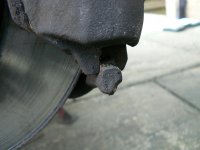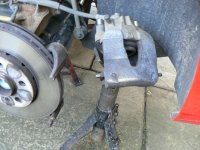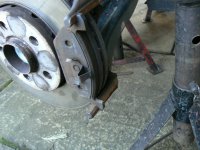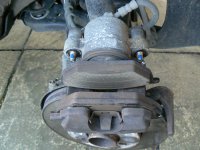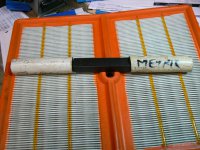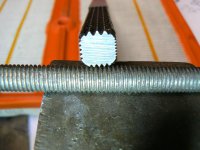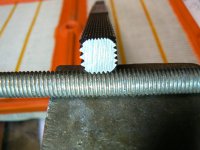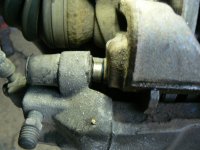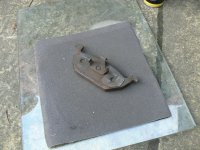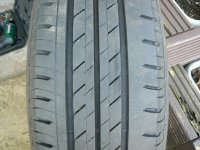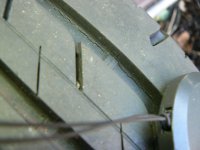I know this thread isn't about a Fiat but a lot of the "stuff" involved is transferable knowledge. So, Twinkle, my 2016 1.0 litre 3 cylinder turbo petrol engined Ibiza ST (Estate) is now just coming up on 4 years old so her warranty has expired and she's due a service and MOT early next month. Time to get up close and personal! (the main dealer has been attending to her needs up 'till now to maintain warranty compliance - and a good job too as she had a new turbo at 18 months, but that's another story.
I've been collecting engine service parts for a while - oil, air and cabin (pollen) filters (all my favorite Mahle brand) and a 5 litre container of engine oil. I've been agonizing over which VW 504 compliant oil to buy and finally, for many reasons, decided on Fuchs Titan GT1 PRO C-3 5W-30. Seat advise plugs get changed at 4 years/40,000 miles. As I'm only at 18,000 miles albeit 4 years old, I'm leaving the plugs 'till next year. This engine was very new when I bought the car and one of Seat's advertising points was that the timing belt is now a lifetime fitment - REALLY? - Interestingly they still advise periodic visual inspection only with no set replacement interval. I'll be doing mine at 5 years thank you very much! The, very standard looking, canister type fuel filter - with integral pressure controlling diaphragm - is also considered "lifetime". As far as I'm concerned that'll be 5 years too then!
Anyway back to the engine service. I'd been stressing out about the drain plug. It's an alloy sump and I've run into problems with the thread stripping out on this type before - It then becomes a bit of a phaf to rectify - but there are some excellent repair kits now available. VAG recommend always fitting a new plug because the sealing crush washer is captive in the plug and can't be renewed separately. I bought a new genuine one from the dealer for just under £4.00 Old plug on left new on right:
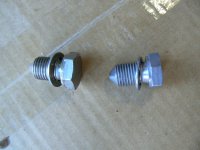
Which I notice is less than some are selling for on ebay. In fact it turned out to be the same plug as used to fit the old PD engined Fabia my boy ran years ago and I've got a new spare lying on my workbench, I'll just use that next time. The dealer also confirmed the torque for it at 30nm - exactly what the Haynes manual advises. I was pleased to find the old plug unscrewed without any sign it had been previously overtightened and the new plug snugged up perfectly - good, the dealer technician would seem to have known what he/she was doing. The oil filter canister is simple to do and very accessible on the front of the engine. I noticed the new Mahle filter did not seem to have an anti drain down diaphragm:
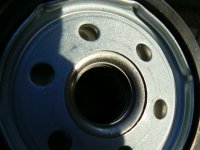
so was glad to see that the genuine VAG filter it replaced didn't have one either. I was also able to prime the new filter with oil before fitting - doubt if the dealer tech would bother to do that. Interested to see the letters MHL on the old (VAG) filter. Could it be that it's manufactured by Mahle?
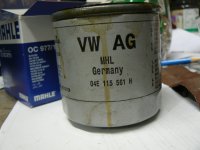
Having filled the engine with oil - took 4 litres which I think is good because I like a nice big sump full of oil on a turbo'd engine - I had another moment of apprehension. This car, as do many these days, does not have a conventional oil warning light. The engine has a pressure sensor which is monitored by the ecu but it only lights a dashboard warning if the engine is running and no oil pressure is seen, You don't get that comforting light lit on the dash when you turn the ignition on and then extinguishes to tell you there's pressure in the galleries. So, starting the engine after the oil change was worrying me because there was going to be no light for me to watch and monitor that pressure was returning. However there is a very reassuring "clue". This engine has roller rockers with hydraulic valve clearance adjustment. When the engine first starts the rockers make a very audible clatter which disappears almost immediately as oil pressure builds up. That's exactly what happened so I knew oil pressure was good. Maybe just imagination or the fact that the oil is new but the engine sounds noticeably less rattly with the new oil? It is a "better" oil than the dealer was using. I discovered they are using a VW 502 spec castrol 5w-40.
The air filter was easily changed once the casing was removed from the engine. There is one torx screw at the front of the filter to be removed, also a small breather pipe. A couple of awkward big and very springy! hose clamps on the intake and feed pipes to the turbo and one small hard nylon vacuum pipe which just unclips. Then you pull upwards - forcefully - and it comes off the two ball headed mounts on the top of the engine.
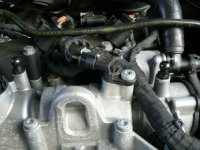
I wonder how long it will take the rubber grommets to degrade, harden up and start rattling?
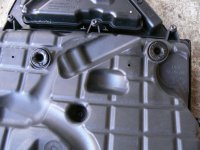
Once off there are a host of small torx screws holding the top on with, the inevitable, sneaky one hiding down a hole so you don't know it's there! A small dab of silicon grease on the rubber grommets eases reassembly and, hopefully, will make removal easier next time. The second time it was serviced it came back with this scratch on the top of the filter.

It annoys me every time I open the bonnet but, unsurprisingly, complaining got me nowhere!
Once you've got the filter off the turbo intake is very vulnerable and needs to be shielded (with a cloth or paper towels maybe) as even quite a small bit of debris falling in here will be the kiss of death to the turbo;

Finally the cabin filter. I really have to give Seat (VAG) full marks on this one. The filter is under the dash on the passenger side and has to be one of the easiest I've ever done. No dash/glove box parts to remove. simply look up under the dash from the passenger foot well and you'll see the cover:

Slide the retaining slider clips to the middle and withdraw the cover downwards (it virtually falls off)
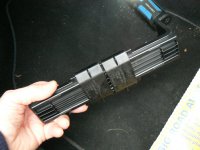
Pull the old filter out downward and push the new one in in it's place:
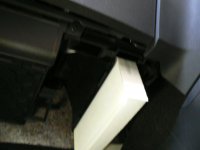
Once it's pushed fully home place the cover back in position and slide the clips outwards to lock in place

Took me less than 5 minutes and this was the first time. probably a 2 or 3 minute job next time.
I'll finish this one here but the brakes were a little more interesting so I'll be back to tell you all about it soon.
As a wee puzzler for you, guess what this is? it caused me to use the little grey cells for a few moments. Clue: the hard black nylon pipe coming out of it.

I've been collecting engine service parts for a while - oil, air and cabin (pollen) filters (all my favorite Mahle brand) and a 5 litre container of engine oil. I've been agonizing over which VW 504 compliant oil to buy and finally, for many reasons, decided on Fuchs Titan GT1 PRO C-3 5W-30. Seat advise plugs get changed at 4 years/40,000 miles. As I'm only at 18,000 miles albeit 4 years old, I'm leaving the plugs 'till next year. This engine was very new when I bought the car and one of Seat's advertising points was that the timing belt is now a lifetime fitment - REALLY? - Interestingly they still advise periodic visual inspection only with no set replacement interval. I'll be doing mine at 5 years thank you very much! The, very standard looking, canister type fuel filter - with integral pressure controlling diaphragm - is also considered "lifetime". As far as I'm concerned that'll be 5 years too then!
Anyway back to the engine service. I'd been stressing out about the drain plug. It's an alloy sump and I've run into problems with the thread stripping out on this type before - It then becomes a bit of a phaf to rectify - but there are some excellent repair kits now available. VAG recommend always fitting a new plug because the sealing crush washer is captive in the plug and can't be renewed separately. I bought a new genuine one from the dealer for just under £4.00 Old plug on left new on right:

Which I notice is less than some are selling for on ebay. In fact it turned out to be the same plug as used to fit the old PD engined Fabia my boy ran years ago and I've got a new spare lying on my workbench, I'll just use that next time. The dealer also confirmed the torque for it at 30nm - exactly what the Haynes manual advises. I was pleased to find the old plug unscrewed without any sign it had been previously overtightened and the new plug snugged up perfectly - good, the dealer technician would seem to have known what he/she was doing. The oil filter canister is simple to do and very accessible on the front of the engine. I noticed the new Mahle filter did not seem to have an anti drain down diaphragm:

so was glad to see that the genuine VAG filter it replaced didn't have one either. I was also able to prime the new filter with oil before fitting - doubt if the dealer tech would bother to do that. Interested to see the letters MHL on the old (VAG) filter. Could it be that it's manufactured by Mahle?

Having filled the engine with oil - took 4 litres which I think is good because I like a nice big sump full of oil on a turbo'd engine - I had another moment of apprehension. This car, as do many these days, does not have a conventional oil warning light. The engine has a pressure sensor which is monitored by the ecu but it only lights a dashboard warning if the engine is running and no oil pressure is seen, You don't get that comforting light lit on the dash when you turn the ignition on and then extinguishes to tell you there's pressure in the galleries. So, starting the engine after the oil change was worrying me because there was going to be no light for me to watch and monitor that pressure was returning. However there is a very reassuring "clue". This engine has roller rockers with hydraulic valve clearance adjustment. When the engine first starts the rockers make a very audible clatter which disappears almost immediately as oil pressure builds up. That's exactly what happened so I knew oil pressure was good. Maybe just imagination or the fact that the oil is new but the engine sounds noticeably less rattly with the new oil? It is a "better" oil than the dealer was using. I discovered they are using a VW 502 spec castrol 5w-40.
The air filter was easily changed once the casing was removed from the engine. There is one torx screw at the front of the filter to be removed, also a small breather pipe. A couple of awkward big and very springy! hose clamps on the intake and feed pipes to the turbo and one small hard nylon vacuum pipe which just unclips. Then you pull upwards - forcefully - and it comes off the two ball headed mounts on the top of the engine.

I wonder how long it will take the rubber grommets to degrade, harden up and start rattling?

Once off there are a host of small torx screws holding the top on with, the inevitable, sneaky one hiding down a hole so you don't know it's there! A small dab of silicon grease on the rubber grommets eases reassembly and, hopefully, will make removal easier next time. The second time it was serviced it came back with this scratch on the top of the filter.

It annoys me every time I open the bonnet but, unsurprisingly, complaining got me nowhere!
Once you've got the filter off the turbo intake is very vulnerable and needs to be shielded (with a cloth or paper towels maybe) as even quite a small bit of debris falling in here will be the kiss of death to the turbo;

Finally the cabin filter. I really have to give Seat (VAG) full marks on this one. The filter is under the dash on the passenger side and has to be one of the easiest I've ever done. No dash/glove box parts to remove. simply look up under the dash from the passenger foot well and you'll see the cover:

Slide the retaining slider clips to the middle and withdraw the cover downwards (it virtually falls off)

Pull the old filter out downward and push the new one in in it's place:

Once it's pushed fully home place the cover back in position and slide the clips outwards to lock in place

Took me less than 5 minutes and this was the first time. probably a 2 or 3 minute job next time.
I'll finish this one here but the brakes were a little more interesting so I'll be back to tell you all about it soon.
As a wee puzzler for you, guess what this is? it caused me to use the little grey cells for a few moments. Clue: the hard black nylon pipe coming out of it.

Last edited:


